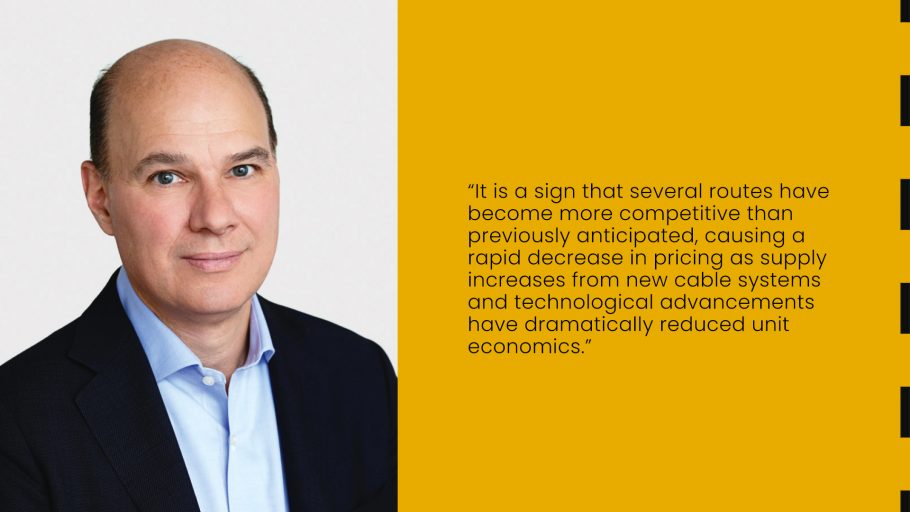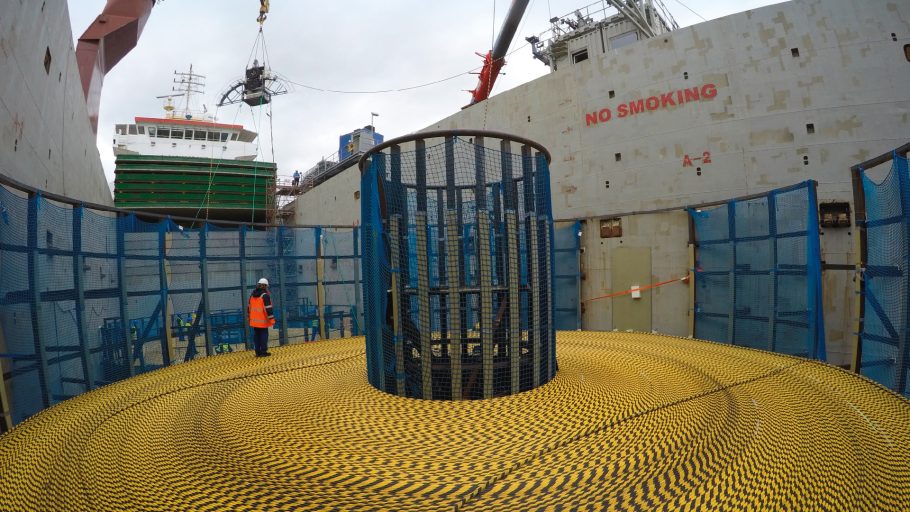After more than a decade of slow growth, the global subsea cable market has been expanding rapidly in recent years. According to Market and Markets Research, this sector is now a $13 billion revenue business and is v expected to grow by double digits to $22 billion by 2025 as operators try to keep pace with the surge in global bandwidth demand and increasing Internet connections worldwide. According to TeleGeography, there are 420 cable systems and 1,106 landing stations that are either currently active or expected to be operational by the end of 2021. By the end of 2020, approximately 100 new submarine cables totaling over 400,000 kilometers will be deployed over the prior 5 years at a cost $13.8 billion.
The OTTs Dominate the Market
In this growing market, the consortium model of the ‘90s has diminished dramatically compared to the new vintage of OTT-anchored developments. Like the data center industry, the submarine cable industry is now dominated by the large “over the top” (OTT) operators—particularly Facebook, Google, Amazon and Microsoft—as OTT bandwidth consumption now accounts for over 50% percent of all international data traffic. In order to meet their growing demand, these content providers have announced subsea cables in numerous geographies around the world as they seek diverse routes with scalable bandwidth and reduced latency. Google alone is investing in 14 subsea cable systems with approximately 112,000 km in total cable length. Between 2016 and 2018, Google invested $47 billion in capex to improve its Google Cloud infrastructure, which includes 134 points of presence. Facebook follows closely behind Google with a total of 10 announced subsea cables. According to TeleGeography, the international capacity deployed by the OTTs rose 14-fold between 2012 and 2016.
New Technology Driving Deployments
Four and six-pair fiber cable systems are also being displaced by much higher density deployments. The industry is now seeing 12 and 14-pair deployments, with several of the newly announced cables topping out at 24 pairs. In addition, the capacity per pair is increasing rapidly. Where in the past we saw 8-12 Tbps per fiber pair, a recent experiment by Facebook and Microsoft achieved record speeds of over 26 Tbps on the MAREA cable. This represents a dramatic improvement over the 20 Tbps per pair on the system, that it was originally thought capable of transmitting. MAREA is widely considered to be the world’s highest capacity subsea cable with a total theoretical capacity of 160 Tbps.

Some Private Operators Hit Speed Bumps
While the OTTs flourish in this industry, several private operators seem to be struggling. In September 2019, Global Cloud Xchange filed for bankruptcy, and in December, Seabras also entered the realm of bankruptcy protection, albeit to be worked out internally among inside constituents. Does this mean that the submarine cable industry is not healthy, and its demand is slowing? On the contrary, demand is at a 30-year peak. It is a sign that several routes have become more competitive than previously anticipated, causing a rapid decrease in pricing as supply increases from new cable systems and technological advancements have dramatically reduced unit economics. These specific situations are also more about total debt and financial flexibility in the capital structure in the face of falling prices than overall demand.

